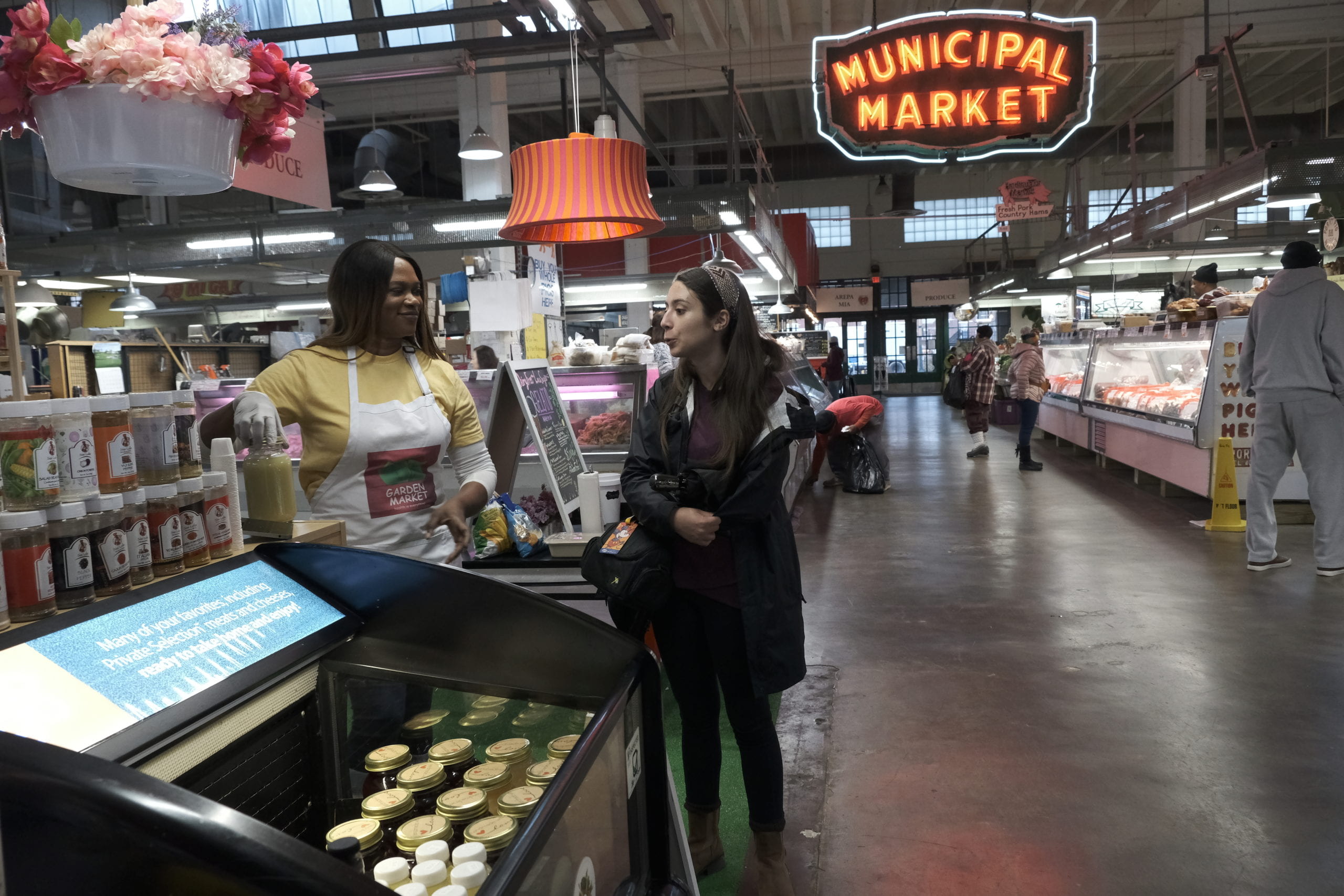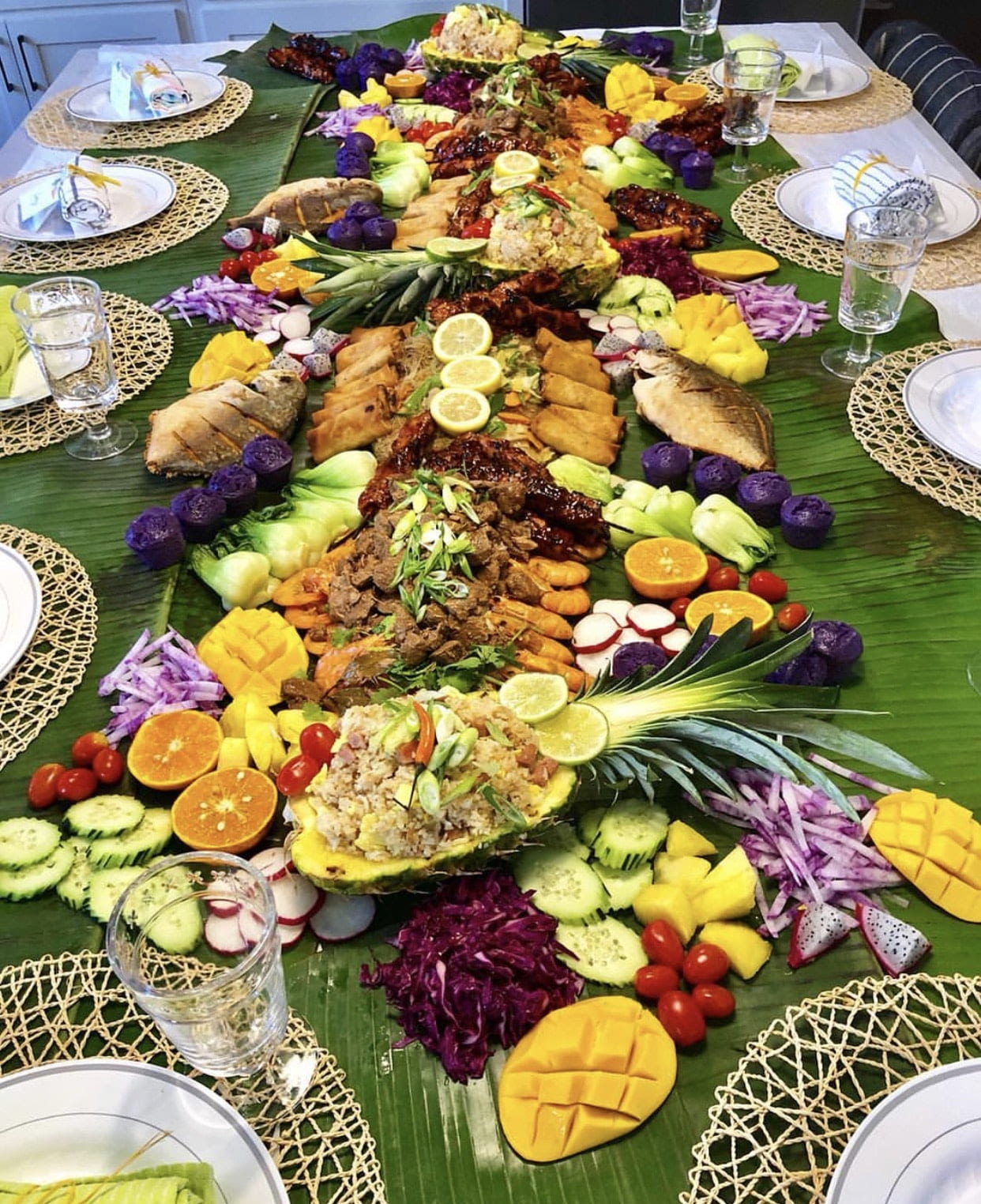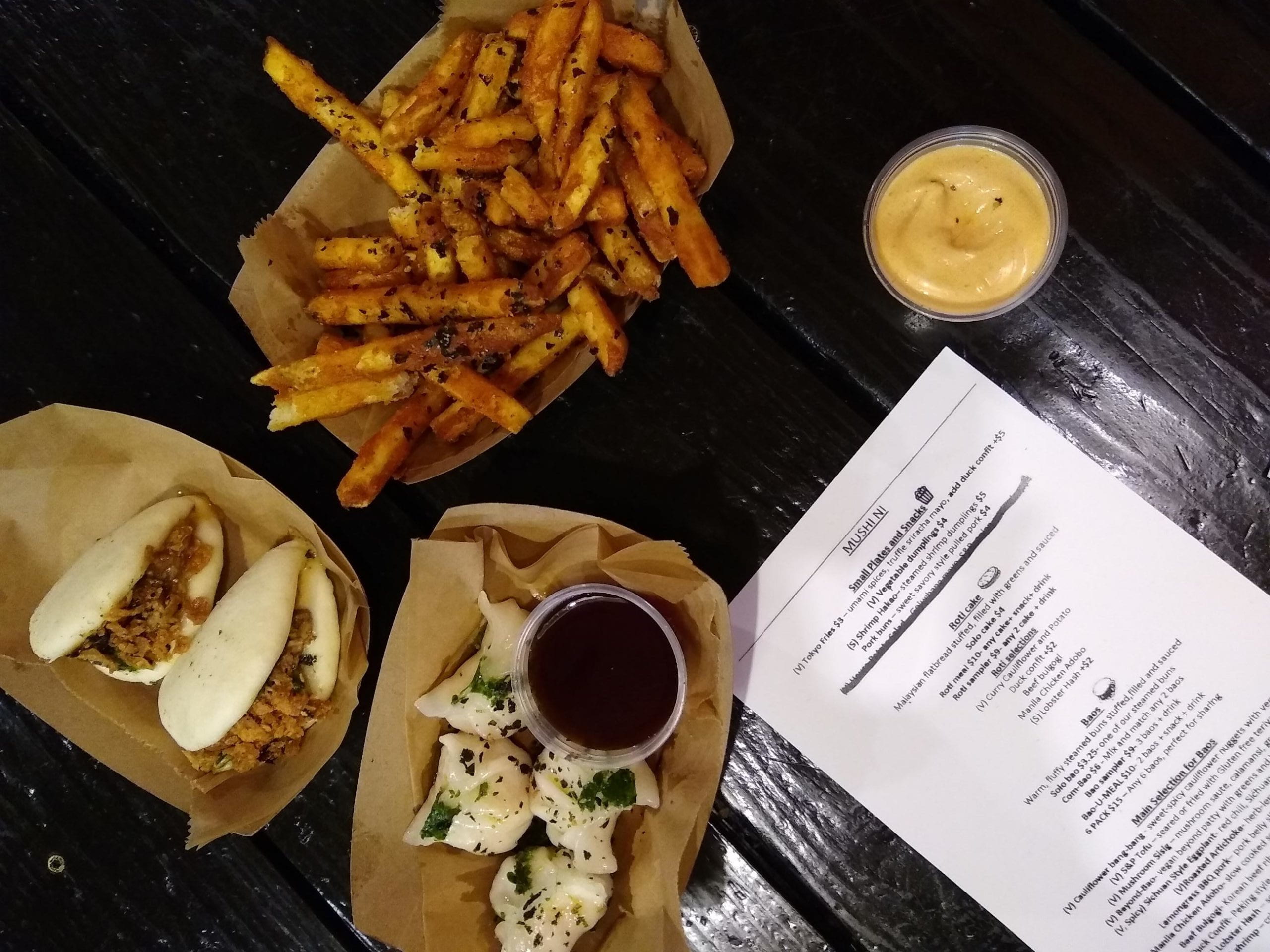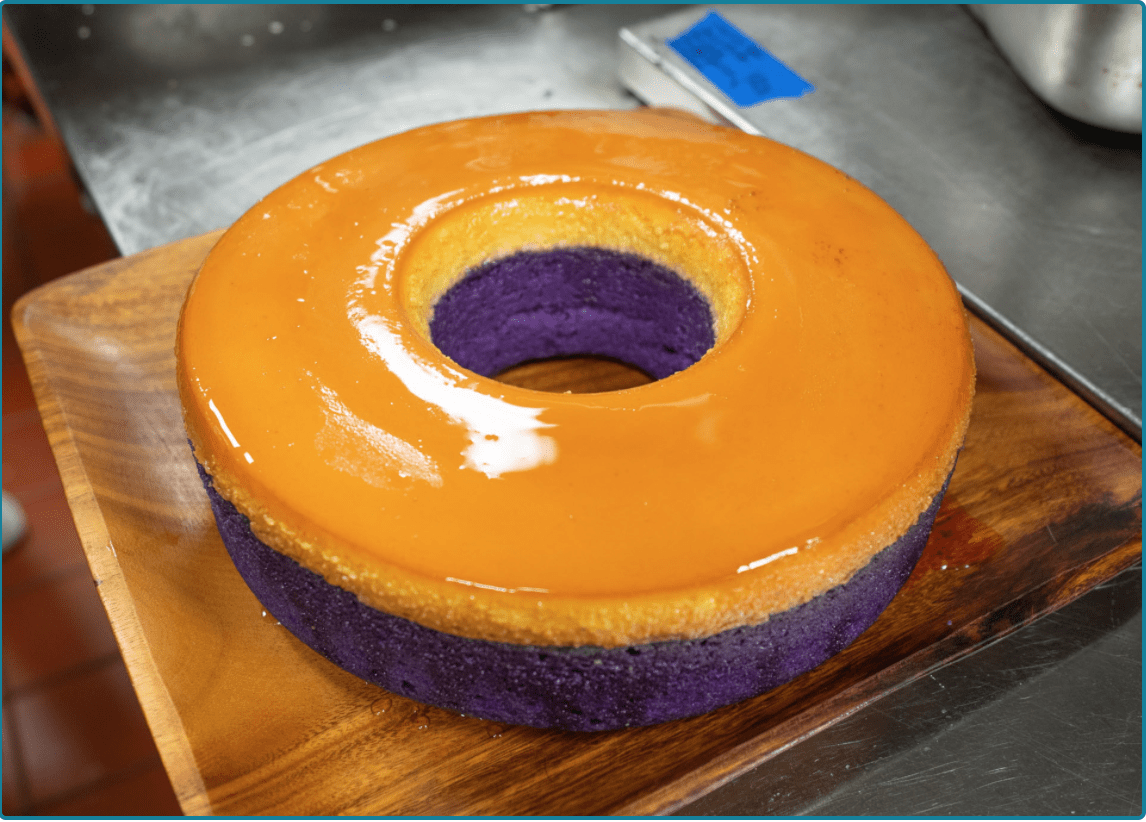Meet the Interviewees

Pamela Joiner
Municipal Market, General Manager

Lily Pabian
We Love Buhi, Executive Director
“It all starts with ‘let’s share a meal together.’ Food is a way of inviting people into your life.”

Mia Orino
Kamayan ATL, Owner
“When I came to Atlanta, I noticed there weren’t any Filipino restaurants around, and although I did not have a culinary background, I wanted to create a space where I could share my love for my food and my culture.”

Michael Le
Mushi Ni, Owner
“Affordable living and the business-friendly government has helped a lot of aspiring entrepreneurs like ourselves take the leap. That was part of the reason we left New York City, where we could have never afforded to get started.”
Let’s talk about it
The team got to meet with Mushi Ni’s owner Michael Le as well as have a conversation with food experts.
Team Member, John Jajeh noted:
“As an Atlantan native, I never grew up thinking about “the South.” I never encountered people with Southern accents and rarely ate Southern cuisine. When conversing with Mushi Ni owner Michael Le, I discovered the outside perspective looking into Atlanta. Le mentioned his worry of the South only serving “bbq and corn on the cob,” later to be dissolved after moving here and understanding the “up-and-coming culture,” as denoted by commentator Brendan Tan-Sahed. After one disintegrates the notion of Atlanta embodying only Southern everything, one quickly realizes that Atlanta acts more as an international oasis in the Bible Belt desert. Whether it concerns music, language, food, film, or stories of any kind, Atlanta continues to represent more ethnicities and cultures. My discussion with Le, Brendan, Prerana, and Yayun overlooks the shattering of this stereotype and what Atlanta is really made of.”
Mushi Ni Commentary
Listen to our team members, John and Yayun, as they interview food connoisseurs Prerana and Brendan and how they as active members of the Atlanta community view the city’s food scene.
What is your story/background?
Tanya and I are both went to culinary school and worked at high-end restaurants and hotels in New York City before moving to Atlanta in 2012 to try something new. We stated Mushi Ni in 2016 as a popup in Senoia as something fun to do.
What were your inspirations in creating Mushi Ni, and how did you start to create fusion food?
We are both Asian American so our inspiration for Mushi Ni was combining our 2 selves, one that is Asian and loved to eat home-cooked meals and try exotic ingredients and our American side that likes to eat fast, fun cuisine.
How well do you think fusion food in Atlanta represents the original cultures being fused? How does your space focus on a global community?
I have lived in Los Angeles, New York, Paris, and Miami and I think Atlanta is just as diverse as any of those. The Collective is great because almost everyone who owns a stall is a minority and first-generation American so you get so many different types of cuisine.
What does your fusion food bring to Atlanta? (ex. What new experiences does it bring over other restaurants/experiences?)
Our version of Asian fusion is fun, we don’t take ourselves too seriously. Mushi Ni so blatantly fusion that it weeds out the “purist” even before they order.
Why do you think it has had a sudden boom in food culture and specifically to Atlanta? Would you have originally seen Atlanta as a diverse food space?
Affordable living and the business-friendly government has helped a lot of aspiring entrepreneurs like ourselves take the leap. That was part of the reason we left New York City, where we could have never afforded to get started. We didn’t really know anything about the city before we moved here, we thought it would be all bbq and corn on the cob!
Have you found that becoming more commercially successful requires compromising the authenticity of the food?
I’ve never worried about being authentic, we never claimed to [be] your grandma. Above all, we want to be creators.
Do you believe the recent influence of “foodie” culture has increased an appreciation for authentic cuisine or do you think it has only perpetuated commercializing culture? (And why?)
Instagram has become the new art gallery and everyone wants a ticket to what they see online, so for us owners, it has been great. It does hurt restaurants that have been around for a long time as don’t have “likable” snapshots but overall it is free advertising and if your food is good people are more likely to know about it than ever before.
Would you define your restaurant as a hole-in-the-wall find? Are hole-in-the-wall restaurants more or less authentic than more commercially popular restaurants of the same cuisine? How do hole-in-the-wall places produce genuine global spaces… or is this a misconception?
I would say the global grub collective does a great job of matching the feel of the neighborhood, a neighborhood that is changing by the day so as business owners we have to adapt to meet our customers’ needs. So, in short, yes it’s a hole in the wall but we are cognisant of the world-changing around us. Hole in the wall spaces definitely have more of an authentic feel simply because they aren’t backed by big money, they are dreamers trying to share a piece of themselves and what they love with the world. It’s no-frills and all the money gets put into the food instead of the decorations or the marketing.
Since opening the restaurant, how has the market changed? What are the age groups or demographics that visit your restaurant?
We are going on our third year now but it feels like a lifetime ago, the market is more aware and alert of the bigger picture. They want locally sourced ingredients, using eco-friendly products at an affordable price, which is a tough battle at our price point but we agree and want the same thing so we stretch ourselves to make it happen. Most of our customers are between 18-34 and looking, about 40% are vegan and many are gluten-free, so if you have a friend with dietary restrictions you both can come and get something that will make you happy.

Kamayan: The team also got to learn about Kamayan. Details from the interview are shared below!
What is Kamayan?
A pop-up restaurant in Atlanta whose name translates to “with hands.” It is a table filled with food where people eat with hands in a communal way. It is not a fancy form of eating in the Philippines; people eat in this manner with their friends and family on the beach.
Can you tell me a little bit about yourself and how you got involved with Kamayan?
She was in Washington DC/Arlington, VA area, and when she moved to Atlanta, she realized that there weren’t any Filipino restaurants despite there being a significant Filipino population. She doesn’t have a culinary background, but she recognized the need for a space for Filipino food. She is half-Chinese, half-Filipino; she uses Chinese techniques but incorporates Filipino flavors. The Philippines experienced Spanish colonization and there is also Chinese influence. There are also regional differences that account for different cuisines. She mentioned how her husband comes from a different area of the Philippines than she does so they know different dishes.
When and how did Kamayan start? What was the inspiration?
It started as a way to share their culture; she did not intend it to be a pop-up restaurant, but its popularity turned into a business. It started in a small cafe, but it later began partnering with larger restaurants. Many volunteers help with the business, and the majority of them are not Filipino. People have also been sending hard-to-find ingredients from Florida, California, and their grandparents’ backyard; it is a collaborative effort.
Why did you decide to start a pop-up restaurant specifically? Do you foresee Kamayan becoming a full-fledged restaurant?
Because they are not beholden to a particular place or the requirements of a space, they can experiment with their food and introduce bolder flavors and try exotic dishes. They are working on a brick-and-mortar restaurant.
What were some of the challenges starting Kamayan and what are some current challenges?
They have to move quite often; they have to constantly haul their materials from one place to the other. One restaurant they partnered with did not even have electricity or water; it was in a dilapidated area, and they had to adapt.

What does partnerships with other restaurants look like? What have been some of your favorite collaborations?
Restaurants mainly provide a space, however, some collaborations merge menus; they did one collaboration with a Lao restaurant and served Lao food, as well.
Who are your typical customers?
Unexpectedly to them, older Filipino generations! They originally thought Kamayan was only for millennials but now realize Kamayan is for all people, and not only Filipinos. There are many returners to their pop-up events.
What does the Filipino community look like in Atlanta? What role does Kamayan play in this community?
The Filipino community is very much integrated into the Atlanta community. Many Filipinos intermarry or are 2nd/3rd generation Filipinos. Although it seems like there isn’t a significant Filipino population, they are dispersed throughout the community.
Have you had to adapt the food you prepare to fit your audience? Or do you try to maintain authenticity as much as possible?
She is determined to maintain the authenticity of the food. She promises her customers Filipino food. However, because she herself is half-Chinese, it is difficult not to incorporate that style of cuisine.
Get a glimpse into what a meal at Kamayan is like from the video linked below!
Video courtesy of Kamayan
A special thank you to Kamayan, We Love BuHi, Mushi Ni, and the Municipal Market for taking the time to share their stories.
Municipal Market | municipalmarketatl.com
We Love Buhi | welovebuhi.org
Kamayan | kamayanatl.com
Mushi Ni | mushini.net
Back to the top